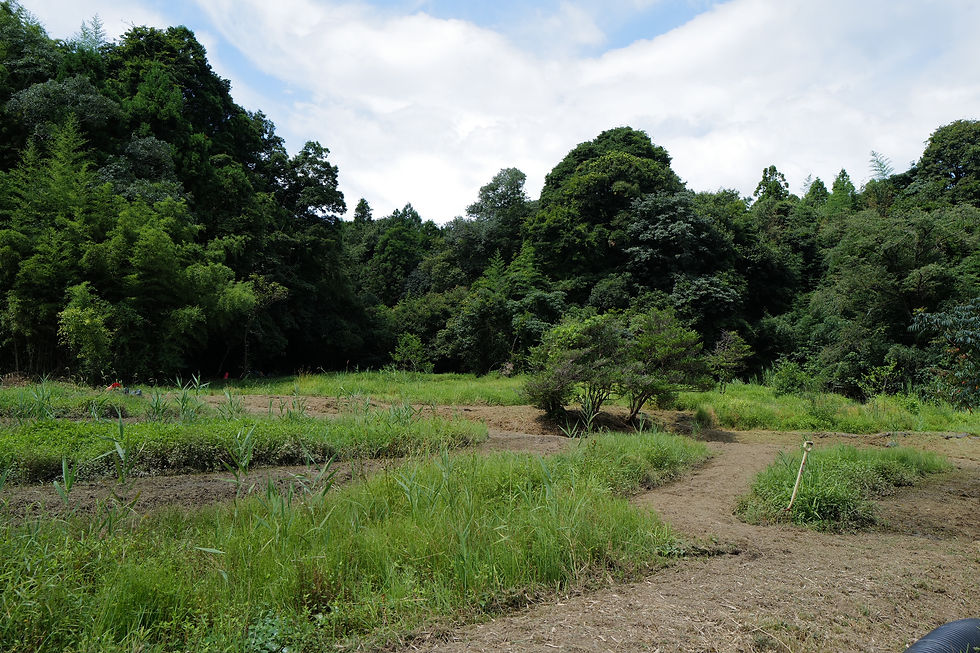Biotope Management in Mie Prefecture Mowing Terraced Rice Paddies and Natural Farming
- 三重県剪定伐採お庭のお手入れ専門店 剪定屋空

- Dec 13, 2022
- 2 min read
We mowed the pathways of the terraced biotope. We continued to use nylon cords to mow down to the ground edge and beat the soil to harden it.


Originally, in order to promote the transition of vegetation, we mow the area up to the edge of the ground once and gradually remove the roots after identifying those that spread by pioneer seeds and underground stems as time passes.

The progress of the raking in the biotope constructed in April was observed and was in good condition for a while, but we saw an outbreak of conagi (eelgrass). However, if a large number of conger eel blooms occur, it will affect the ecosystem of the Japanese loach, and the Japanese loach will die if the water level is too deep. Ideally, it would be better to make a deep-water plow and then gradually lower the water level, but it would also be better to consider creating a shelter for the creatures.

In this biotope, it would be necessary to control the vegetation by raking in midwinter according to the ecology of the damselfly and the cobia loach, and mowing the tops of some of the coneflowers with nylon cords in spring or before summer when various organisms become active, in order to control the amount of the coneflowers.

I think that the reason for the large number of conagia was that the trench soil layer was not well formed and the buried seeds floated up to the surface and germinated. I think that biotope management is similar to the cycle of rice cultivation achieved through natural agriculture.

When I told my adoptive father, Dr. Shinobu, that I had never eaten conger eel, he told me that I should do all those things while I was young. I had eaten grasshoppers and ants as a child, but if I had known I could eat conger eel, I would have eaten it during my insect hunt.

The experience of being in nature is very useful for survival in the event of a major earthquake or disaster that shuts down infrastructure and everything else.







